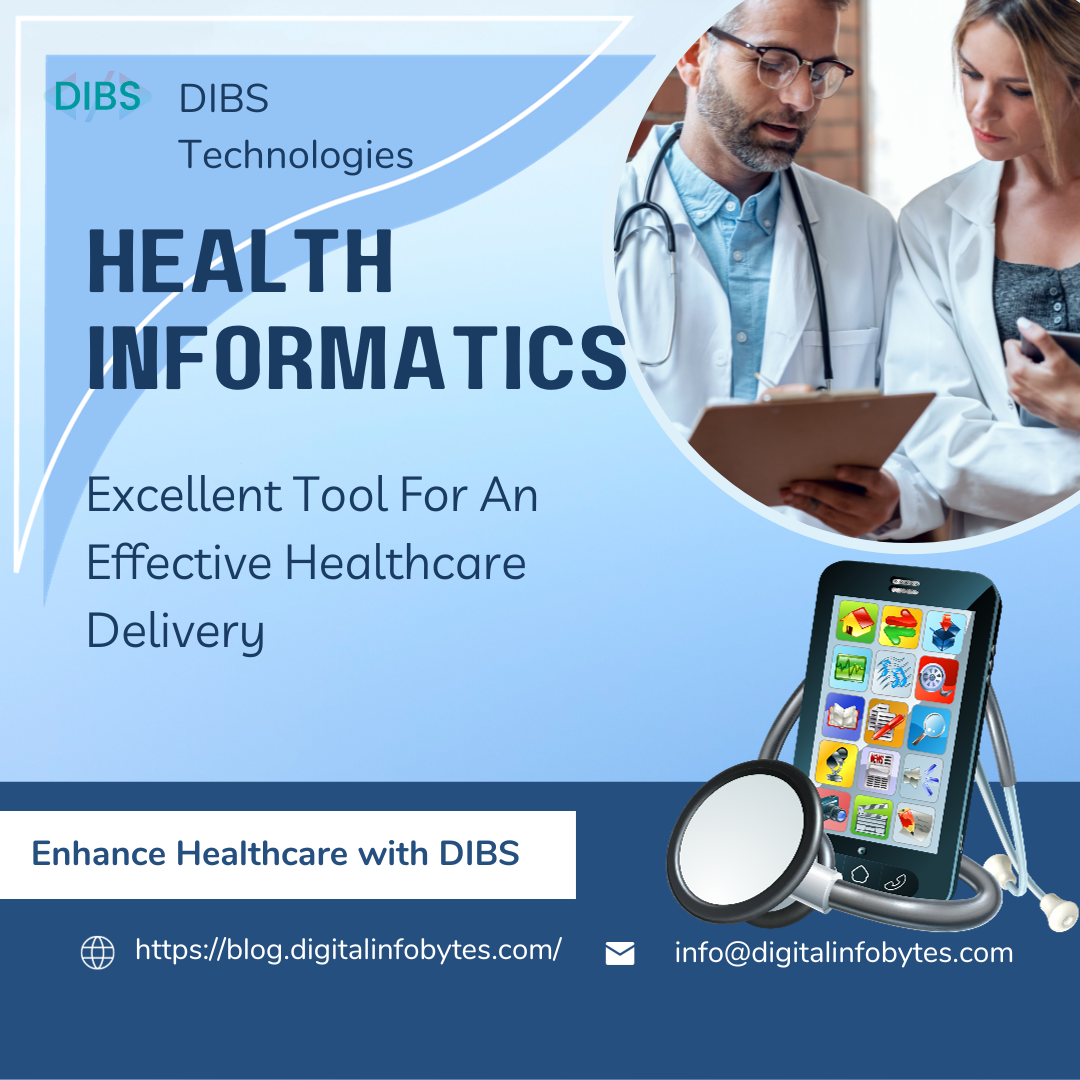Recent statistics have unveiled the progress made in the healthcare sector through the integration of technology. The fusion of healthcare and technology has revolutionized the provision and reception of care, thereby reshaping the field itself. This combination has given rise to sub-fields within healthcare, one example being health informatics. With the merger of healthcare, information technology, and data management; health informatics has paved the way for improving patient care, streamlining operations, and enhancing healthcare delivery. In this blog post, we will delve into the realm of health informatics exploring its components, applications, challenges, and prospects.
Understanding Health Informatics
Health Informatics is a domain that harnesses information and communication technologies to support patient care and healthcare management. It employs methods and techniques such as health records (EHRs) and telemedicine. Health informatics relies on data analytics and health information exchange (HIE) to gain insights and provide medical interventions. Therefore, its primary objective is to leverage data alongside technology to enhance both the quality and efficiency of care.
Key Components of Health Informatics
Electronic Health Record (EHR)
Amongst its elements lies Electronic Health Records which plays a role, in Health Informatics. These electronic records include healthcare information, like a patient’s history diagnoses, prescribed medications, treatment plans, immunization records, allergies, radiology images, and laboratory test results. Electronic health records (EHRs) are thus designed to facilitate the sharing of information among healthcare providers, for coordination and comprehensive patient care.
Health Information Exchange (HIE)
Health Information Exchange (HIE) facilitates information sharing among different healthcare organizations. This interoperability ensures that relevant medical data is accessible to individuals leading to coordination of care and avoiding unnecessary duplication of tests or procedures. HIE thus plays a role in breaking down the barriers that have traditionally hindered the flow of information in healthcare.
Telemedicine
The emergence of telemedicine has transformed healthcare delivery by enabling consultations and monitoring. Patients can now conveniently access healthcare services from the comfort of their homes, which is especially beneficial for those living in underserved areas. Telehealth applications encompass consultations, remote patient monitoring, and mobile health apps, thus empowering individuals to manage their well-being
Data Analytics and Business Intelligence
With the abundance of health-related data, advanced analytics, and business intelligence tools have become instrumental for healthcare organizations. These tools allow them to derive insights, from datasets aiding in decision-making, identifying trends predicting outbreaks, and enhancing population health management. The application of data analytics also contributes to medicine by tailoring treatments based on each patient’s characteristics.
Application of Health Informatics
Clinical Decision Support Systems (CDSS)
Clinical Decision Support Systems employ algorithms and data analysis to support healthcare professionals in making decisions.CDSS enhances the precision of diagnoses by offering recommendations based on evidence promotes compliance, with established guidelines, and minimizes errors, in practice.
Public Health Informatics
Health Informatics, an aspect of health plays a vital role, in monitoring and managing population health data. This includes activities such as disease surveillance outbreak detection and analysis of health trends. Accessing data on time empowers public health officials to promptly respond to emerging health threats.
Patient Engagement and Empowerment
Patient engagement is fostered through Health Informatics by utilizing tools like patient portals, wearable devices, and mobile apps. Patients can actively participate in managing their healthcare by accessing their health records tracking signs and communicating with healthcare providers. This approach focuses on putting the patient at the center of their care.

Challenges in Health Informatics
However, despite the benefits offered by Health Informatics, some challenges need to be addressed during implementation.
Interoperability Issues: One major challenge is interoperability issues caused by the lack of data formats and difficulties in integrating systems. Ensuring the exchange of data among systems is crucial for the effectiveness of Health Informatics.
Data Security and Privacy Concerns: Another concern arises from data security and patient privacy when digitizing health information. Protecting data from unauthorized access or breaches requires robust security measures and compliance with regulations like HIPAA (Health Insurance Portability and Accountability Act).
Resistance to Adoption: Additionally resistance to adopting technologies may hinder their integration into healthcare practices as professionals may be more accustomed, to methods. To overcome this resistance it is essential to implement training programs that are effective and foster a mindset that embraces technology as a means to augment human expertise rather than replace it.
The Future of Health Informatics
As technology continues to progress the future of Health Informatics holds potential.
Artificial Intelligence (AI) and Machine Learning
AI and machine learning algorithms are increasingly being utilized to analyze healthcare data make predictions, about outcomes, and identify patterns that may go unnoticed by humans. These advancements can revolutionize diagnostics, treatment planning, and drug discovery.
Blockchain Technology
Blockchain has the potential to address concerns regarding interoperability and security in Health Informatics. Its decentralized and tamper-resistant nature ensures the integrity and confidentiality of health data thereby fostering trust among stakeholders.
Internet of Things (IoT):
The widespread use of devices in healthcare ranging from fitness trackers to implantable medical devices generates vast amounts of real-time patient data. By integrating IoT into Health Informatics we can enable monitoring, early detection of health issues, and personalized interventions.
Conclusion
Health Informatics lies at the intersection of healthcare and technology reshaping how we deliver and experience healthcare services. The ongoing digital transformation is not, about adopting tools but fundamentally changing our approach to healthcare delivery.
As we face the obstacles and explore the possibilities of Health Informatics we create a path, for a future where technology enhances the standard of care, enhances results, and adds to the health and happiness of people and communities. Embracing this journey guarantees that healthcare stays at the forefront of progress ultimately benefiting everyone.
Talk to our experts to learn more about the advancements in the field of Health Informatics. Find out how the DIBS team can help you integrate your existing healthcare system with Health Informatics and customize its components according to your needs.







Leave a Comment